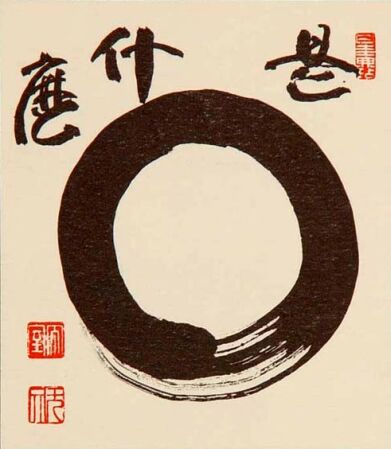
| "What is is, what isn't isn't." ... |

|



|
|
This sumi-e (Japanese
word
for
"black
ink
painting")
circle, is derived from the Sanskrit
word
"sunyata". It
means
"emptiness"
or
"nothingness"
in
Zen
Buddhism.
It was created by Zen master and calligrapher Yamada Mumon Roshi. |
|
|
Postscript: Introduction To Binary Numbering |
| Base 10 decimal | 0 | 1 | 2 | 3 | 4 | 5 | 6 | 7 | 8 | 9 | 10 | 11 | 12 | 13 | 14 | 15 | 16 | 17 | 18 | 19 | 20 |
| Base 10 decimal | 0 | 1 | 2 | 3 | 4 | 5 | 6 | 7 | 8 | 9 | 10 | 11 | 12 | 13 | 14 | 15 | 16 | 17 | 18 | 19 | 20 |
| Base 18 octal | 0 | 1 | 2 | 3 | 4 | 5 | 6 | 7 | 10 | 11 | 12 | 13 | 14 | 15 | 16 | 17 | 20 | 21 | 22 | 23 | 24 |
| Base 10 decimal | 0 | 1 | 2 | 3 | 4 | 5 | 6 | 7 | 8 | 9 | 10 | 11 | 12 | 13 | 14 | 15 | 16 | 17 | 18 | 19 | 20 |
| Base 16 hexadecimal | 0 | 1 | 2 | 3 | 4 | 5 | 6 | 7 | 8 | 9 | A | B | C | D | E | F | 10 | 11 | 12 | 13 | 14 |
| Base 10 decimal | 0 | 1 | 2 | 3 | 4 | 5 | 6 | 7 | 8 | 9 | 10 | 11 | 12 | 13 | 14 | 15 | 16 | 17 | 18 | 19 | 20 |
| Base 12 binary | 0 | 1 | 10 | 11 | 100 | 101 | 110 | 111 | 1000 | 1001 | 1010 | 1011 | 1100 | 1101 | 1110 | 1111 | 10000 | 10001 | 10010 | 10011 | 10100 |
| Communication Promise | E-Mail | Home |
| © Laurence Platt - 2012 through 2023 | Permission |